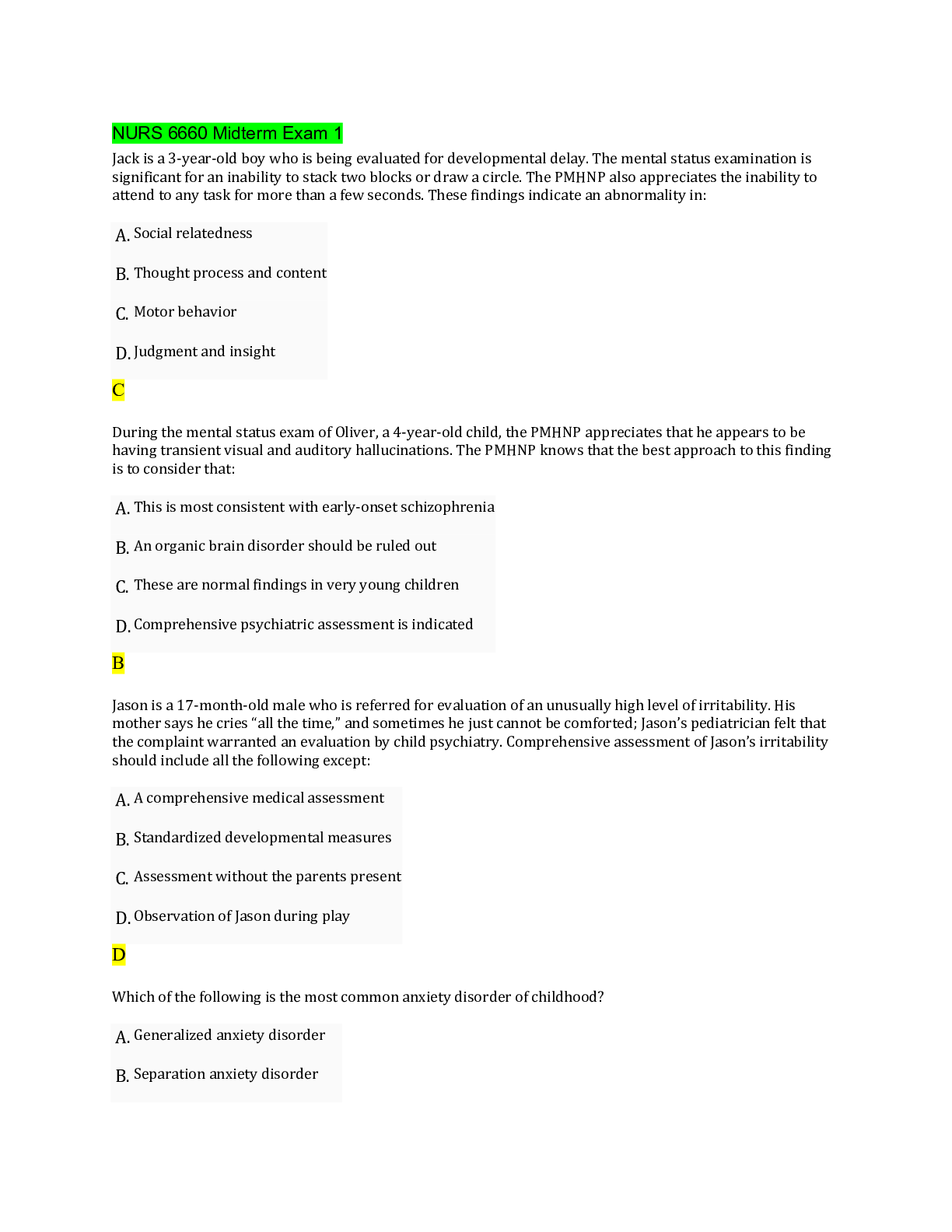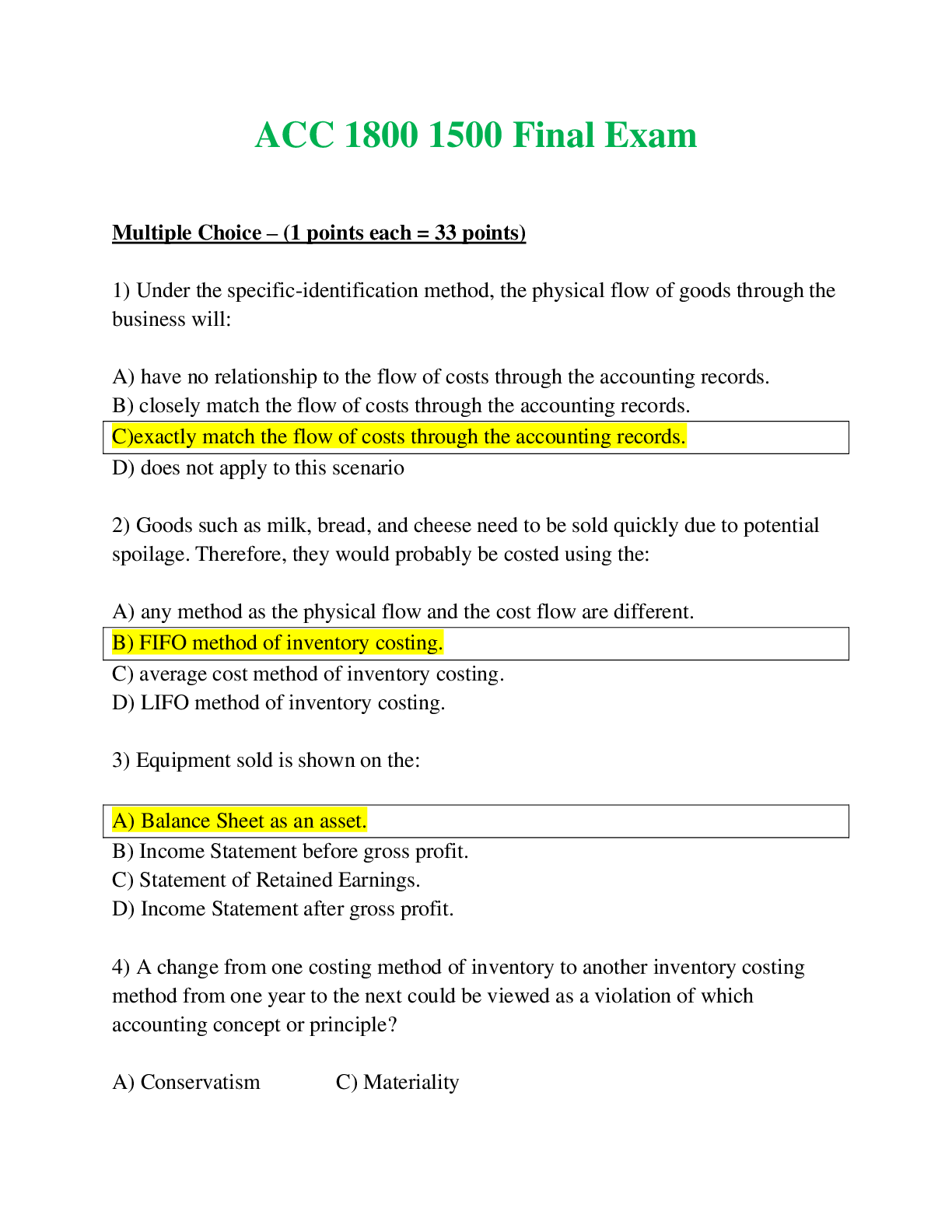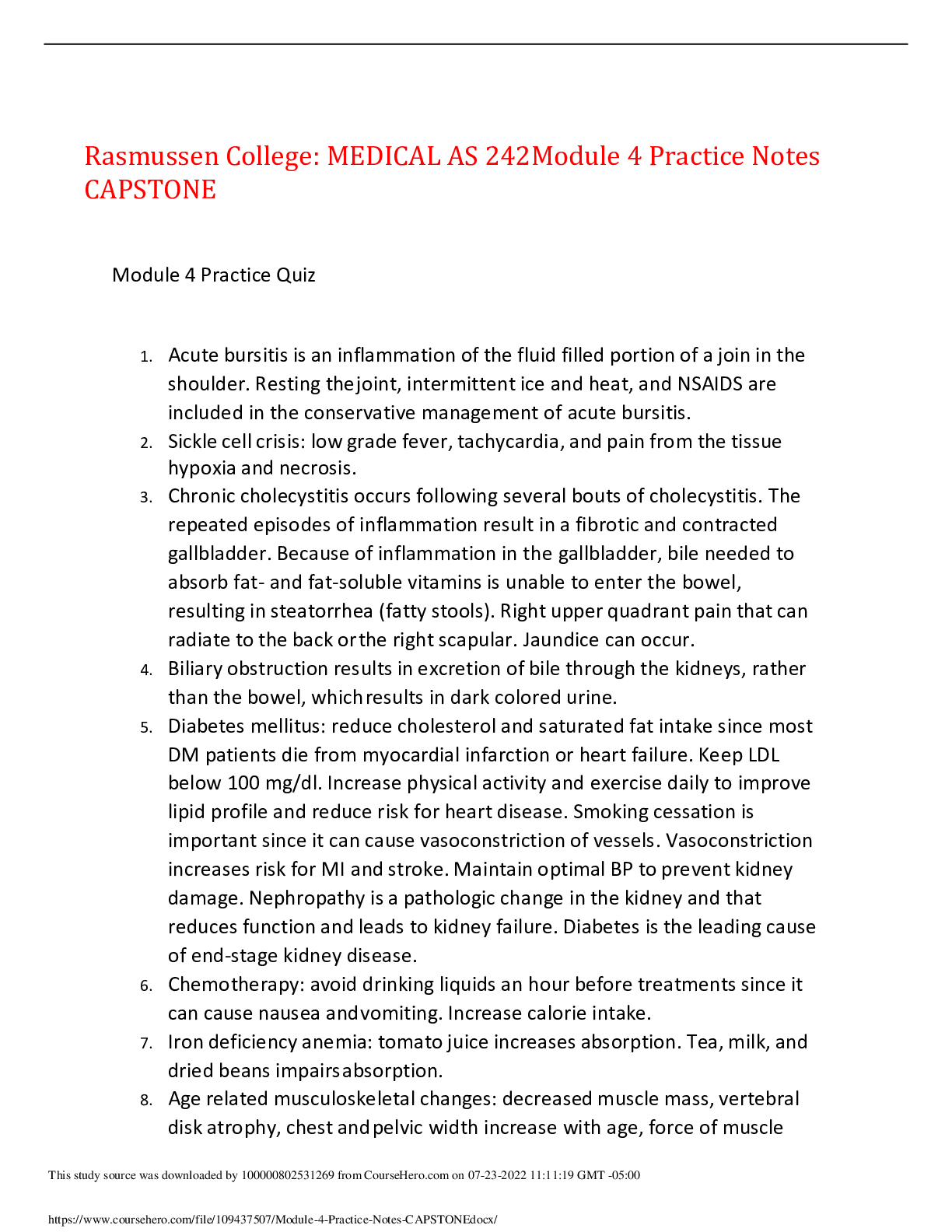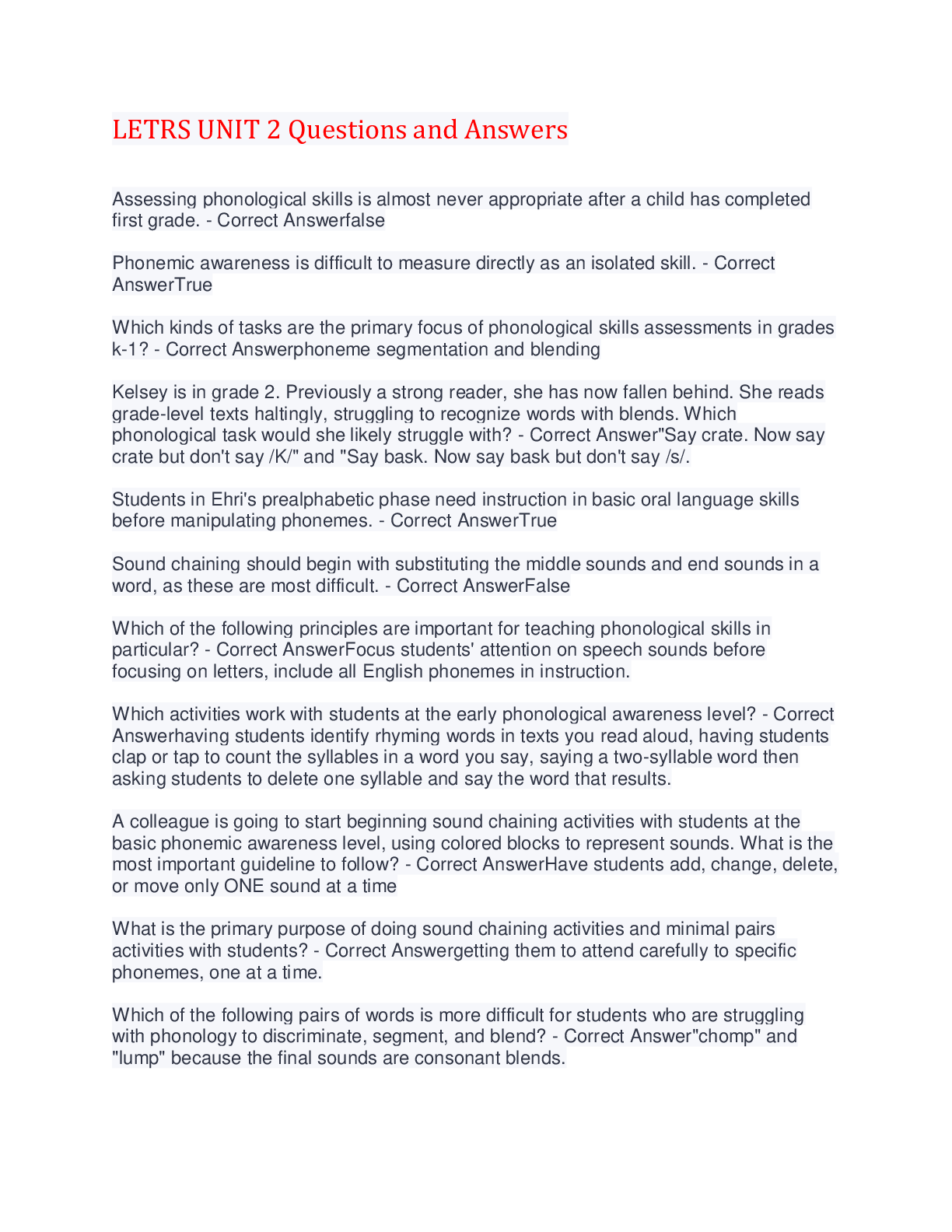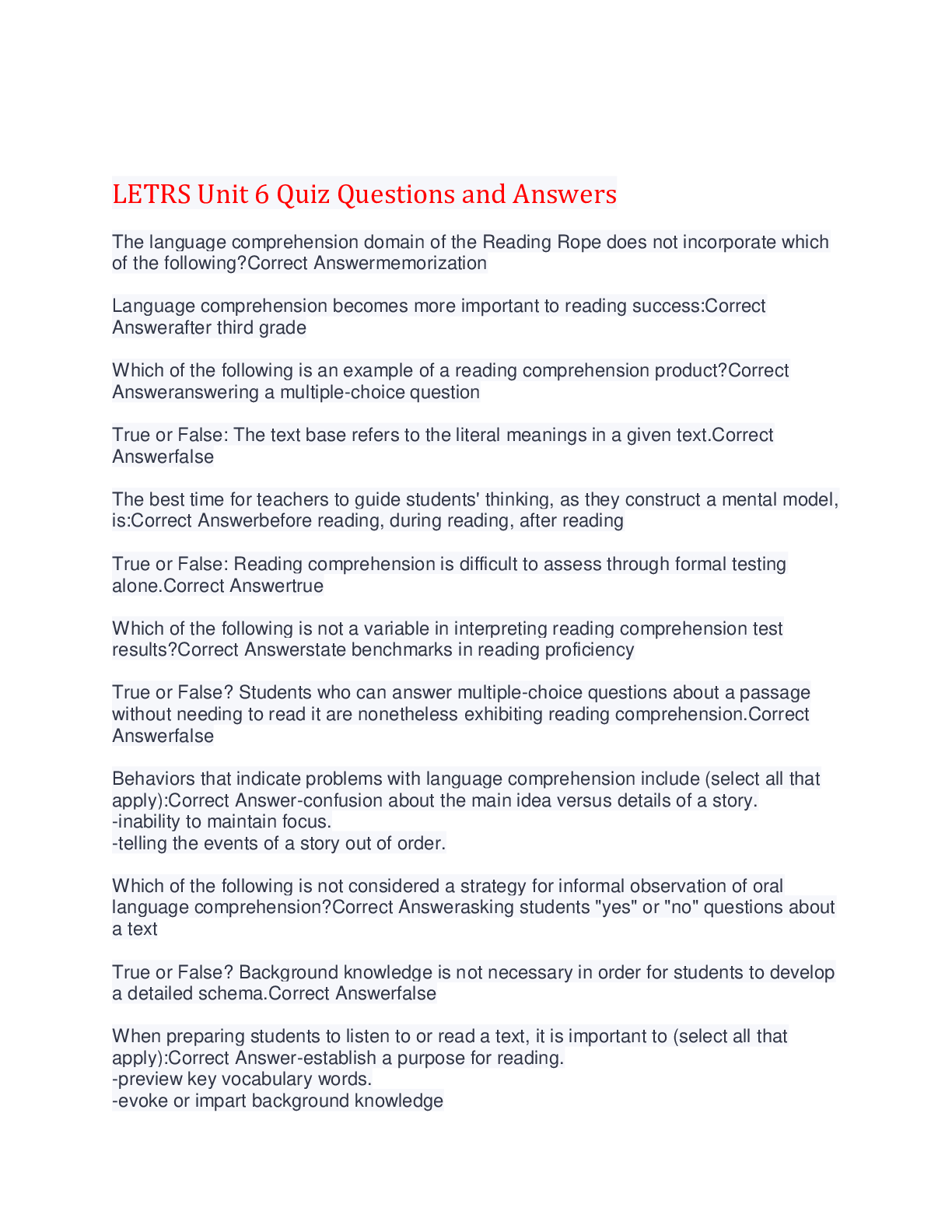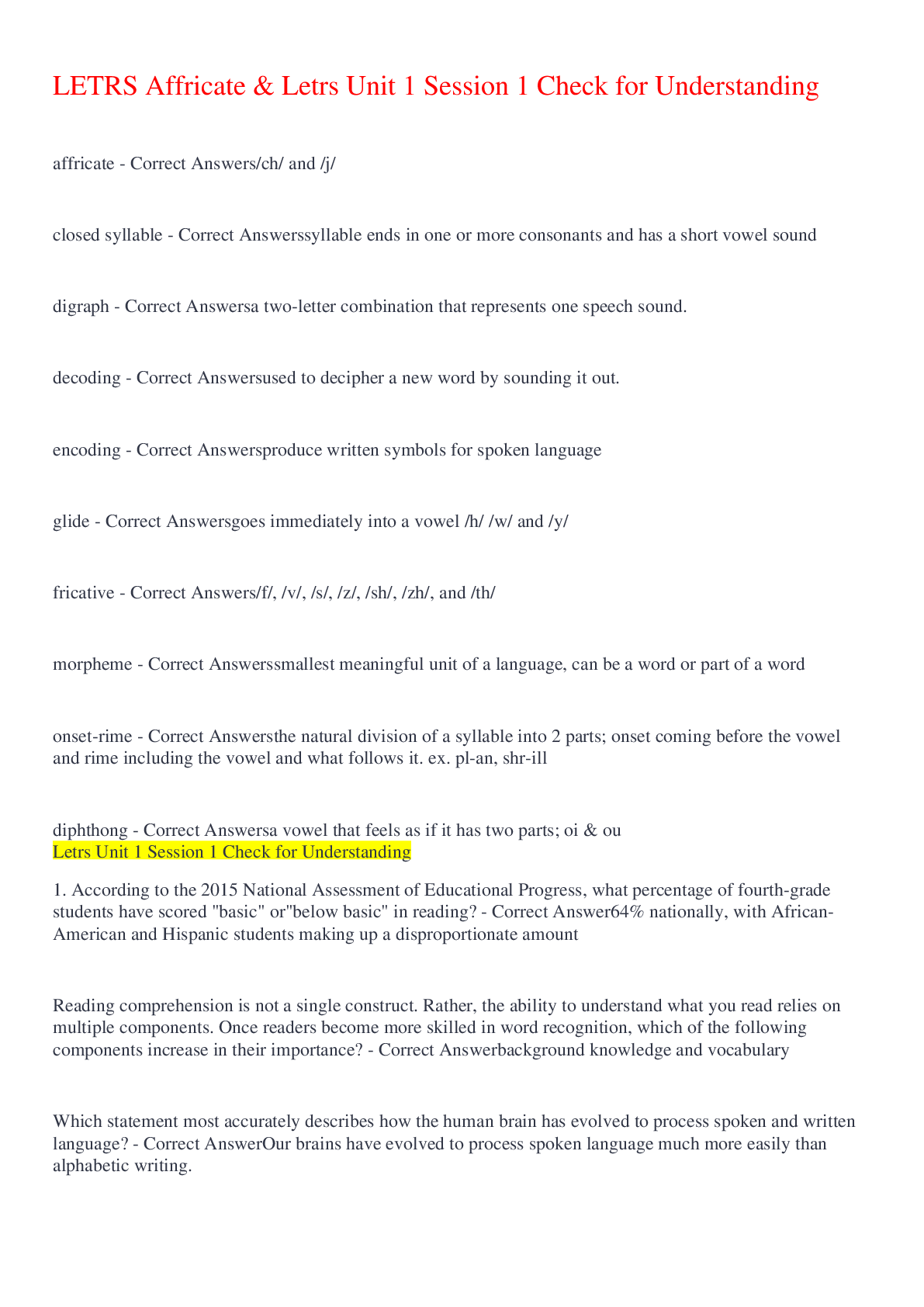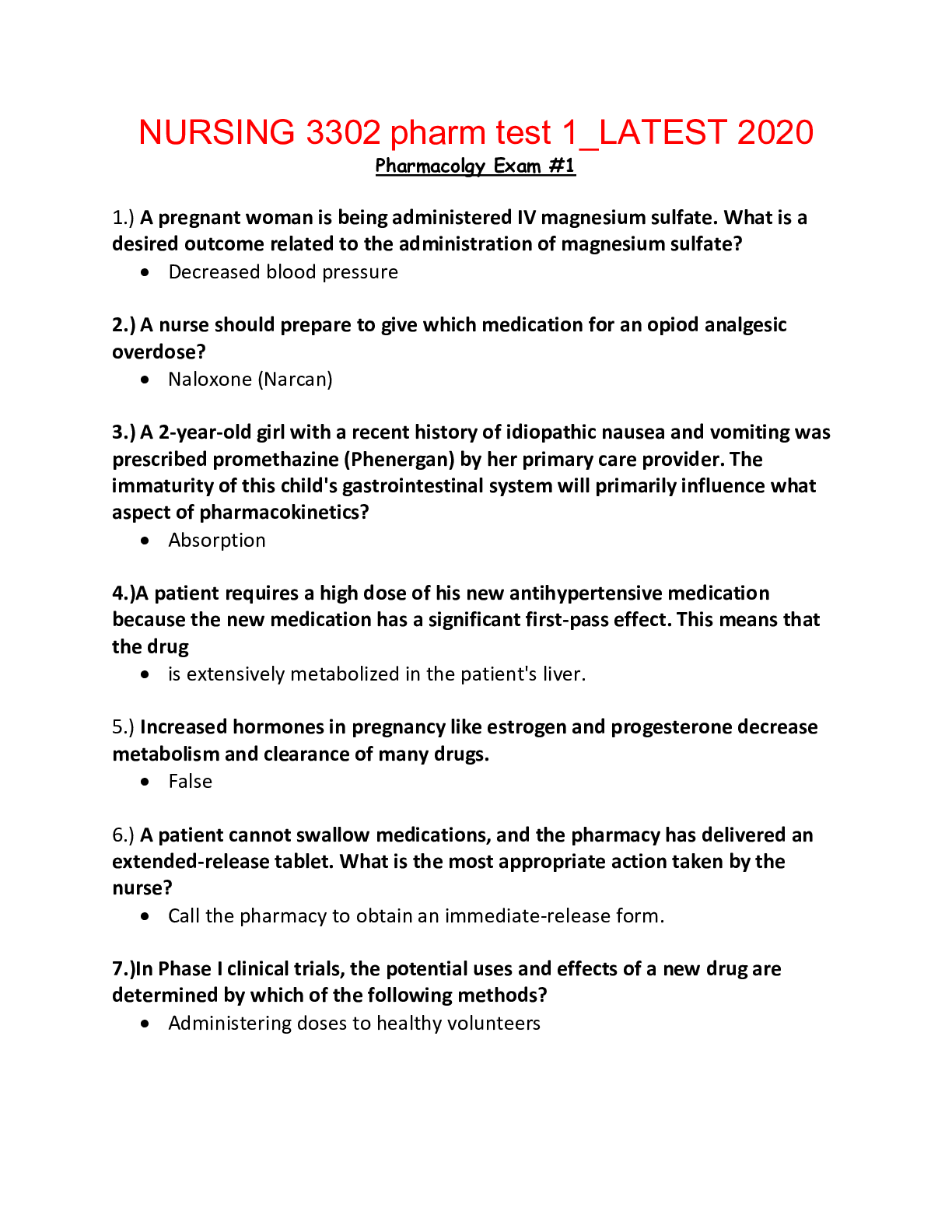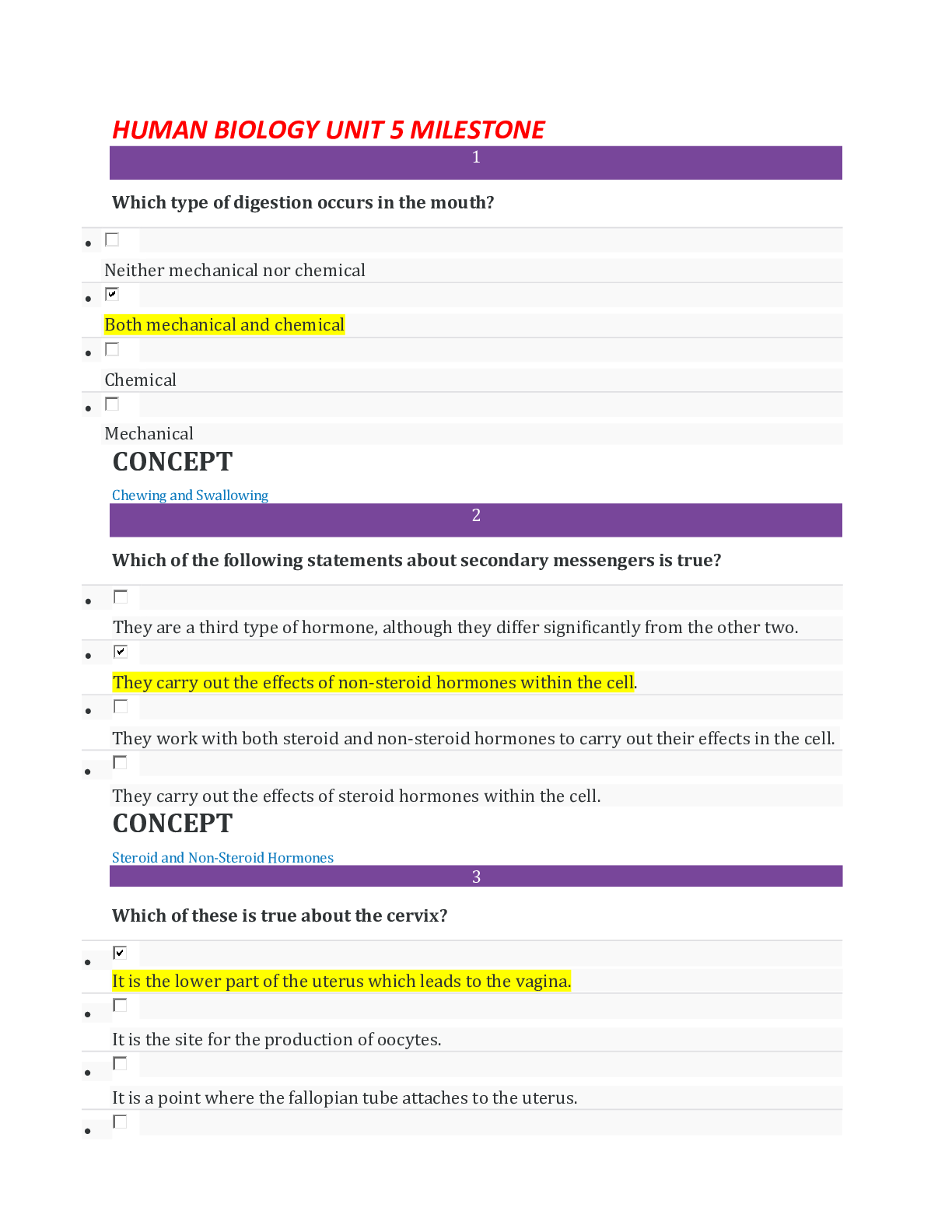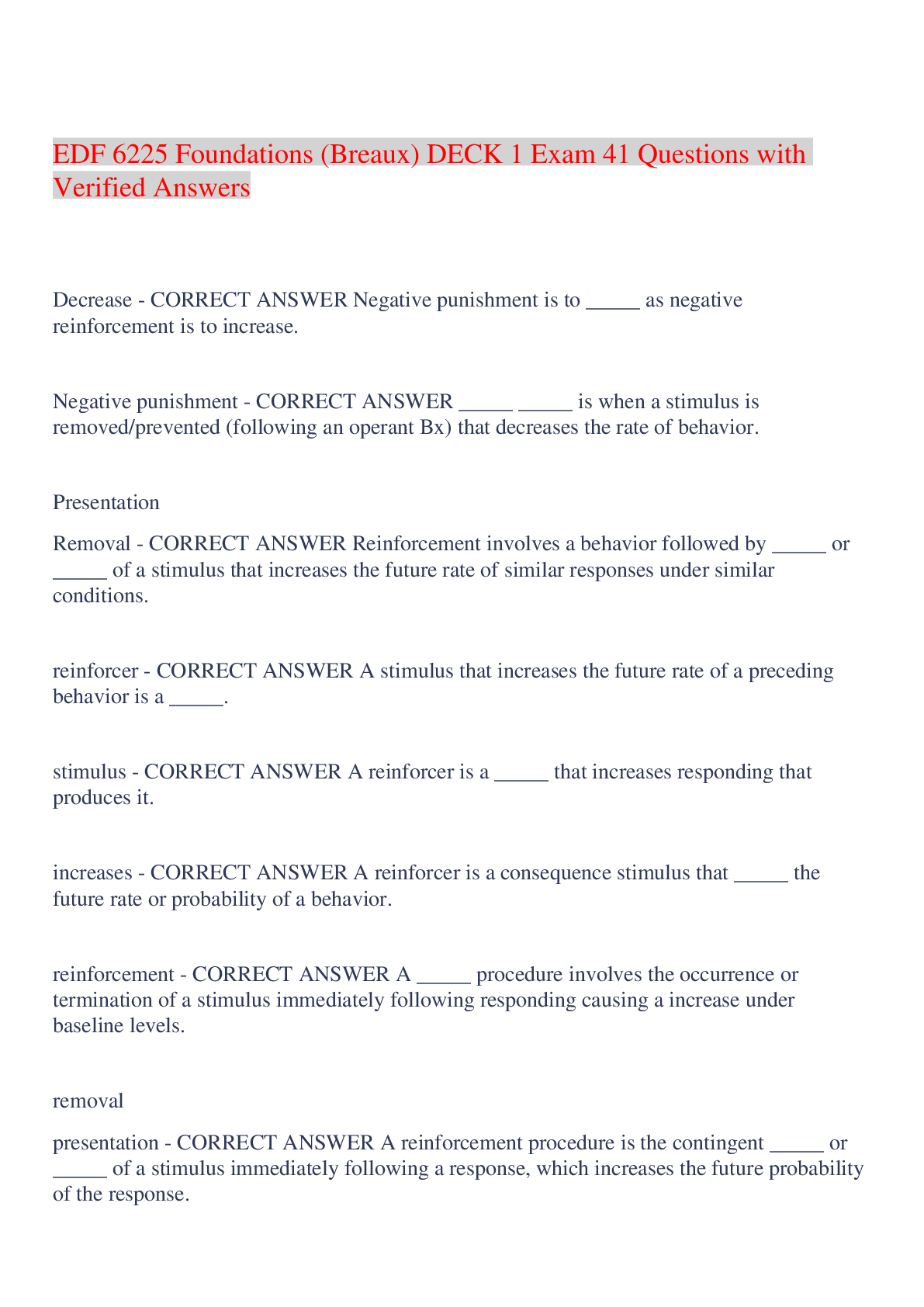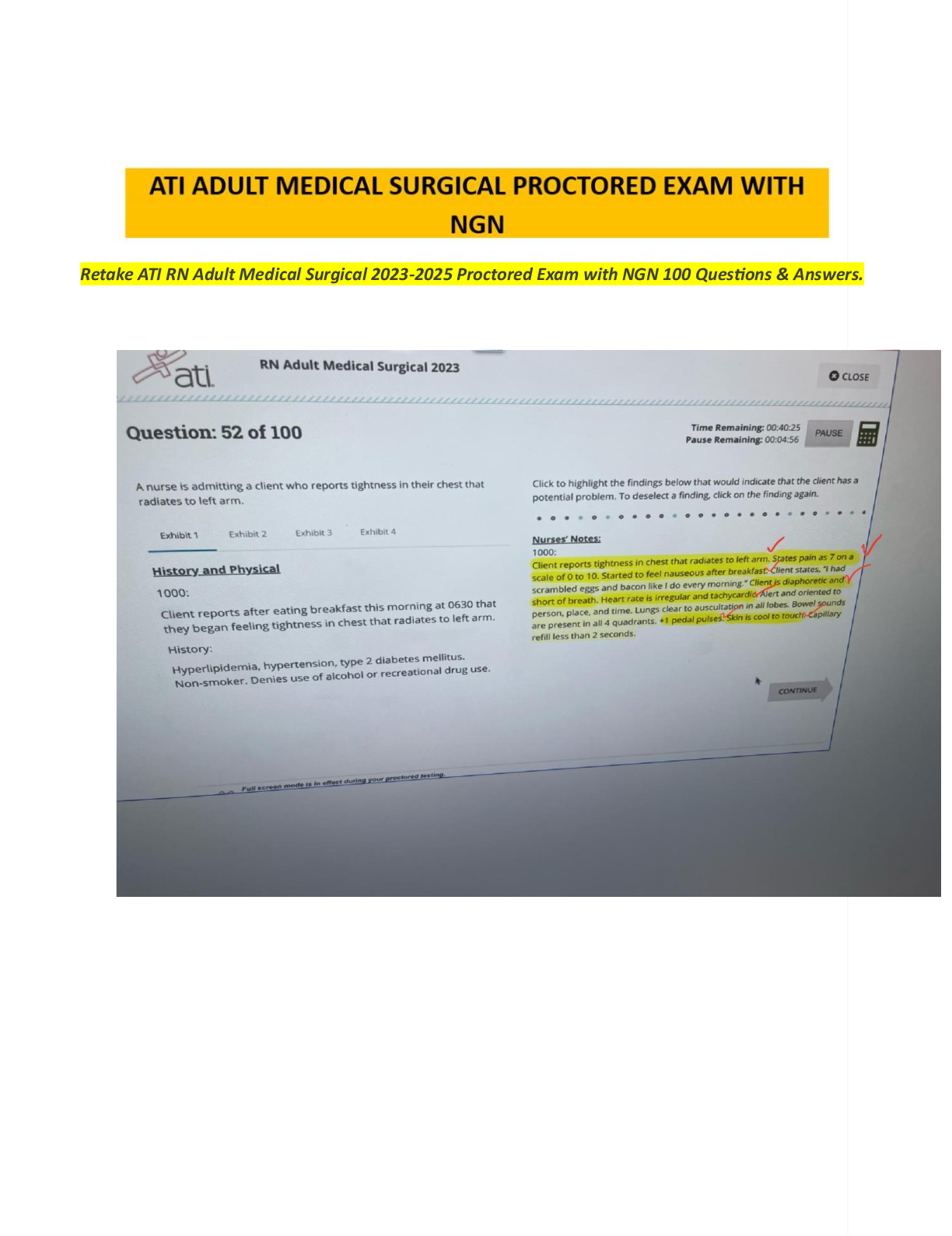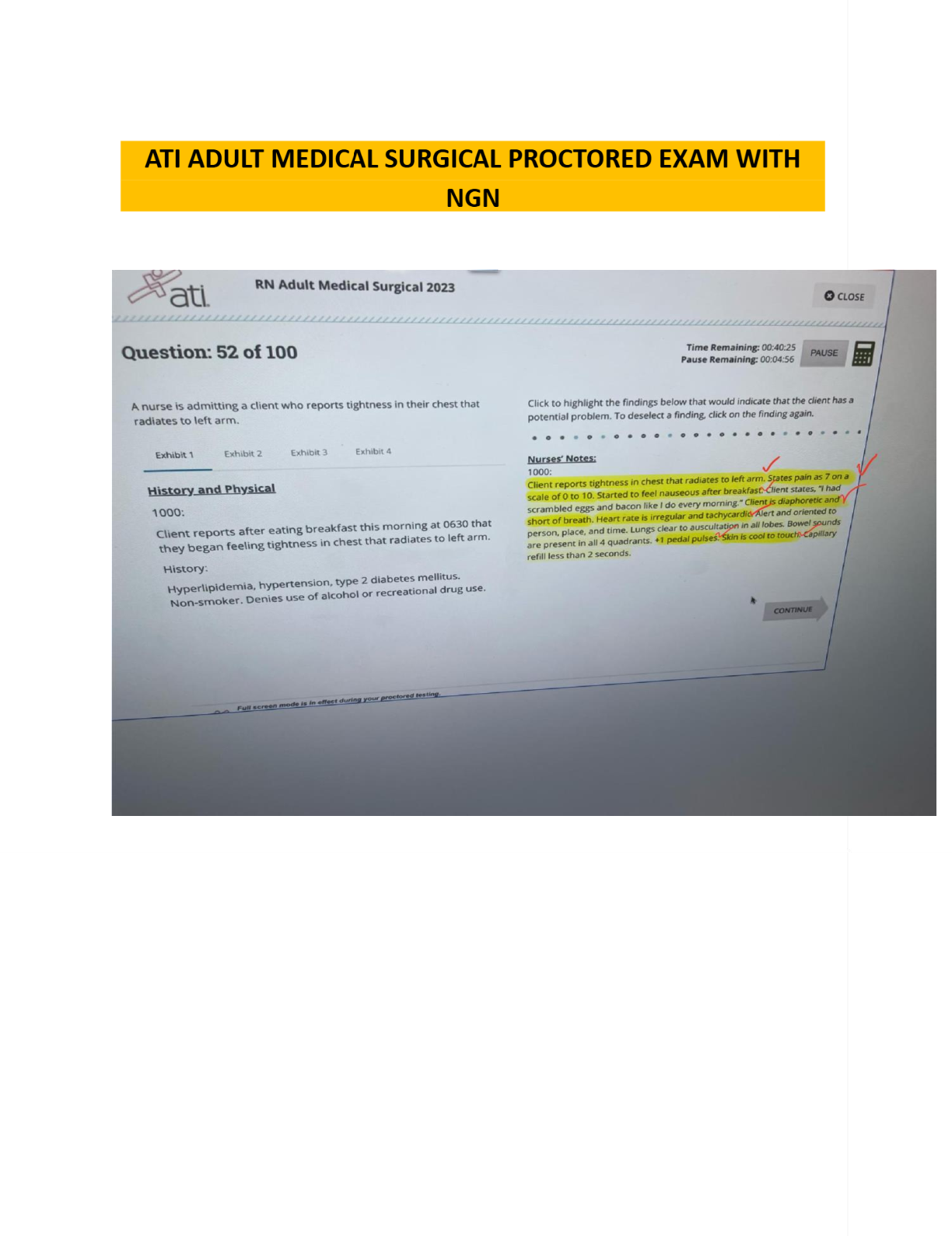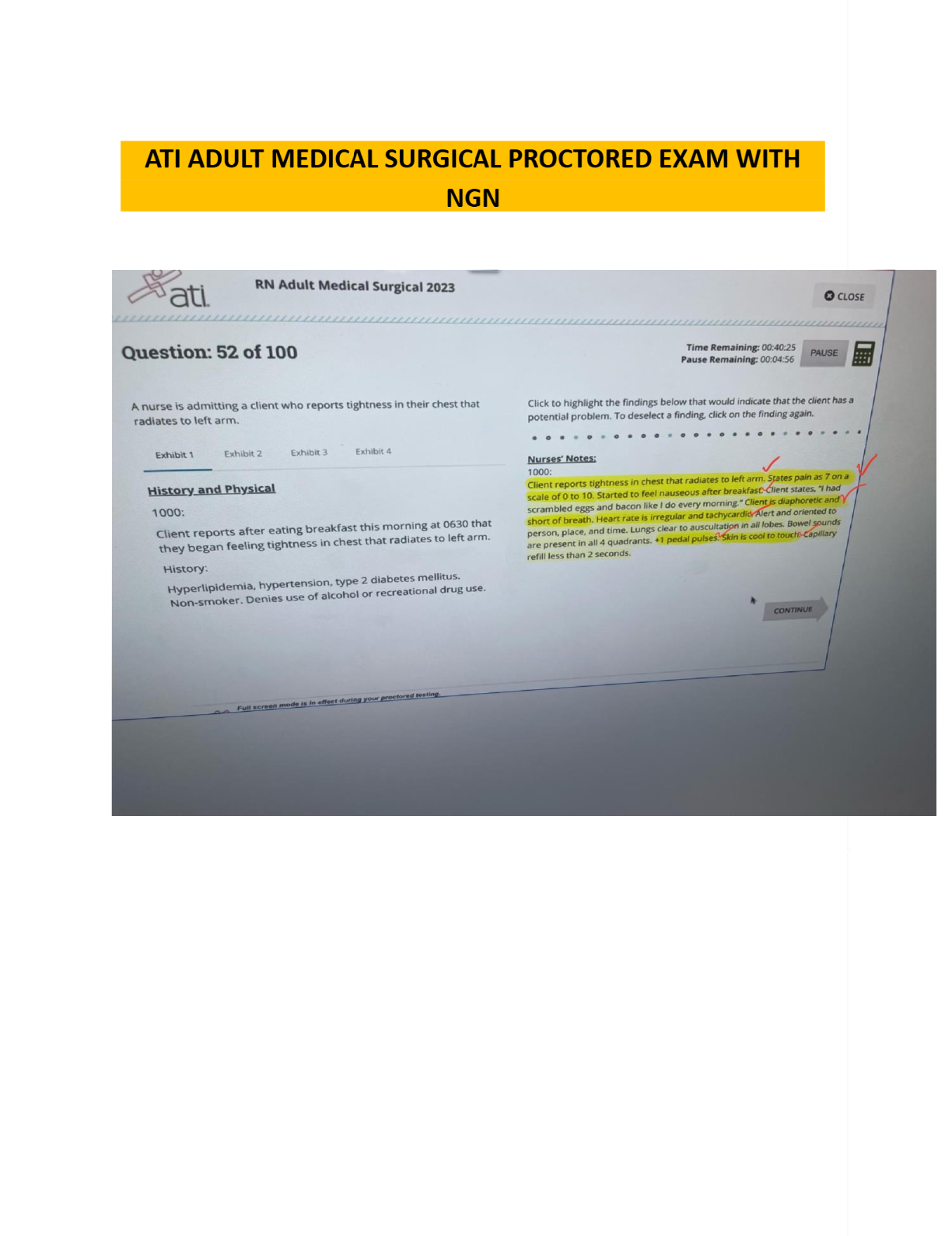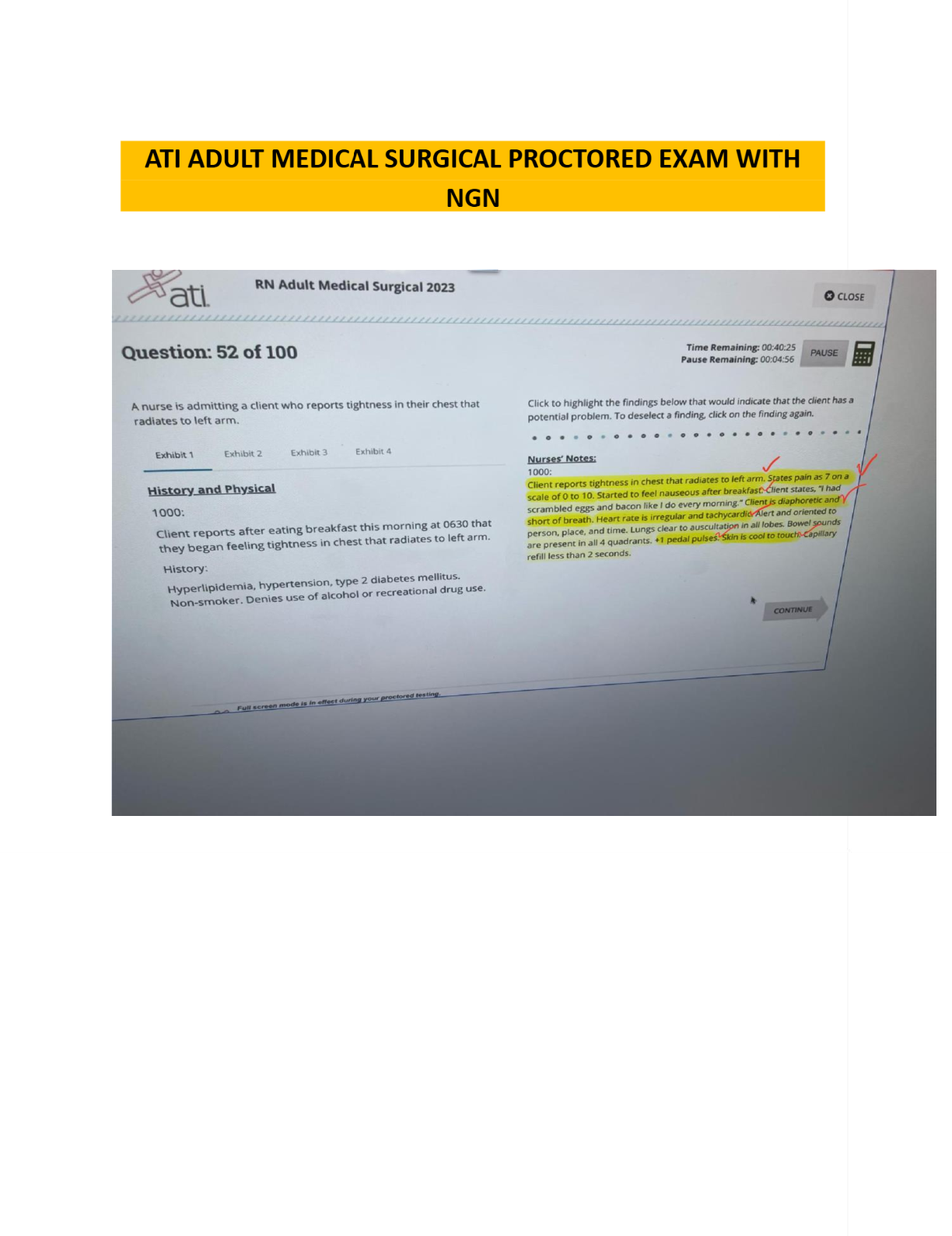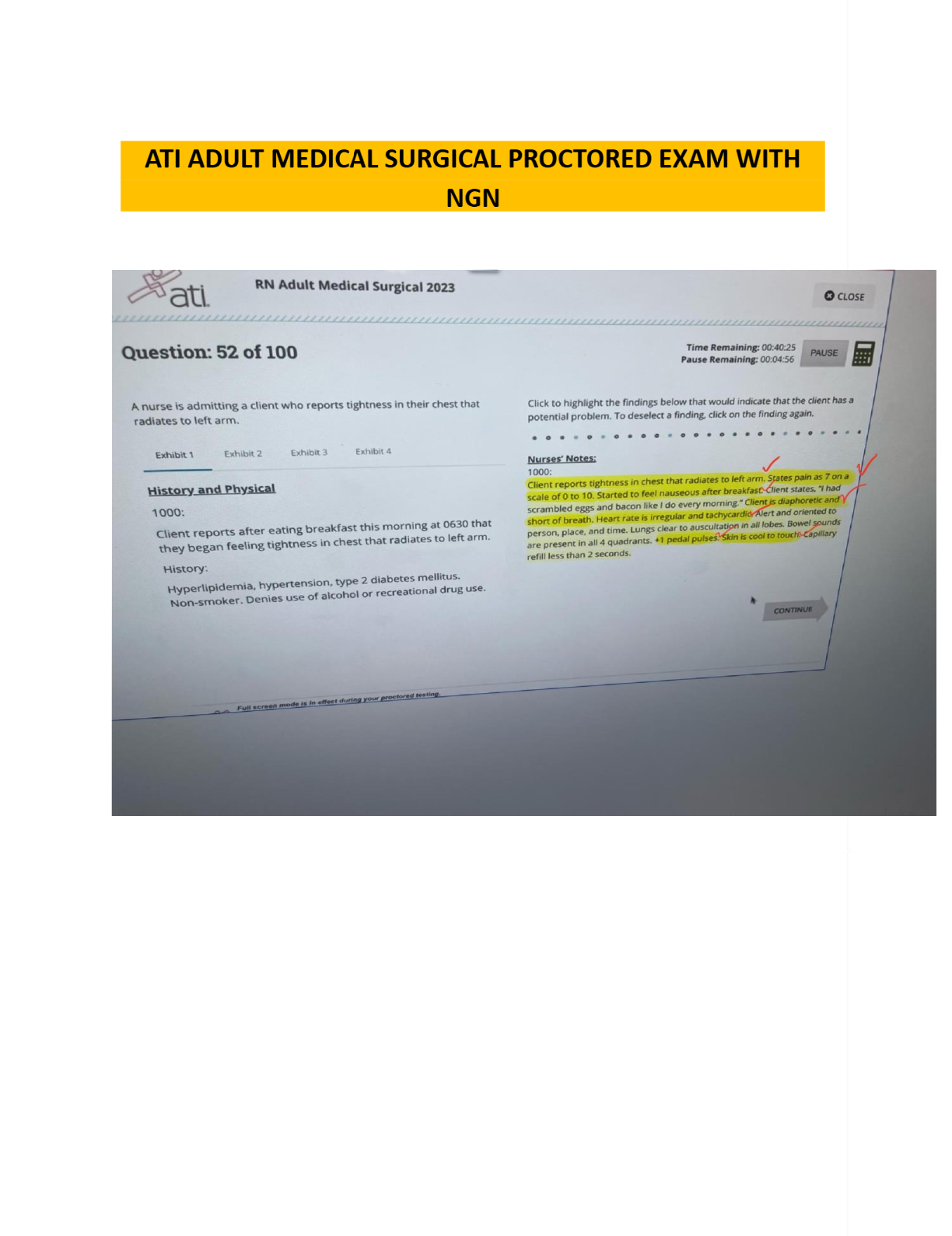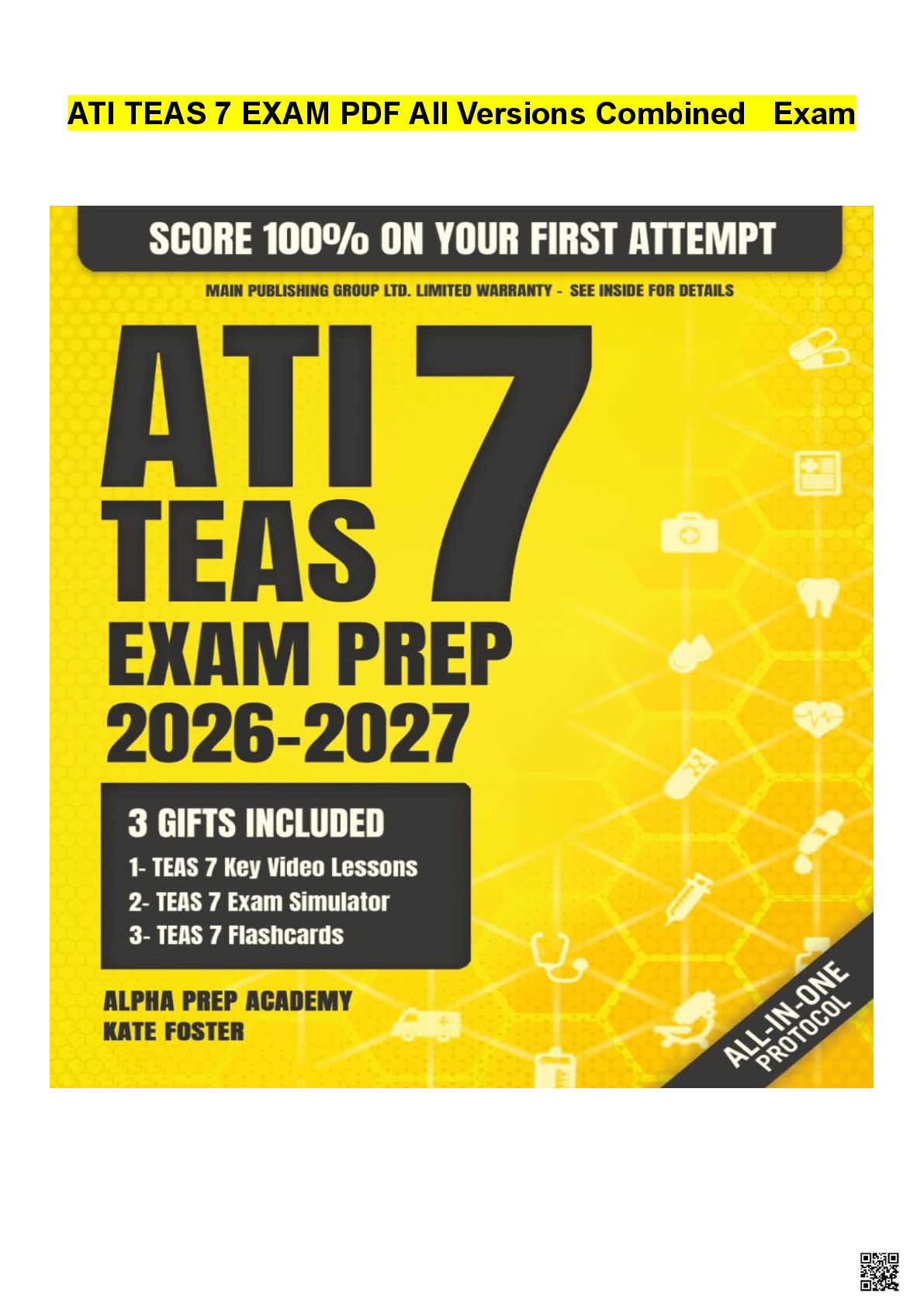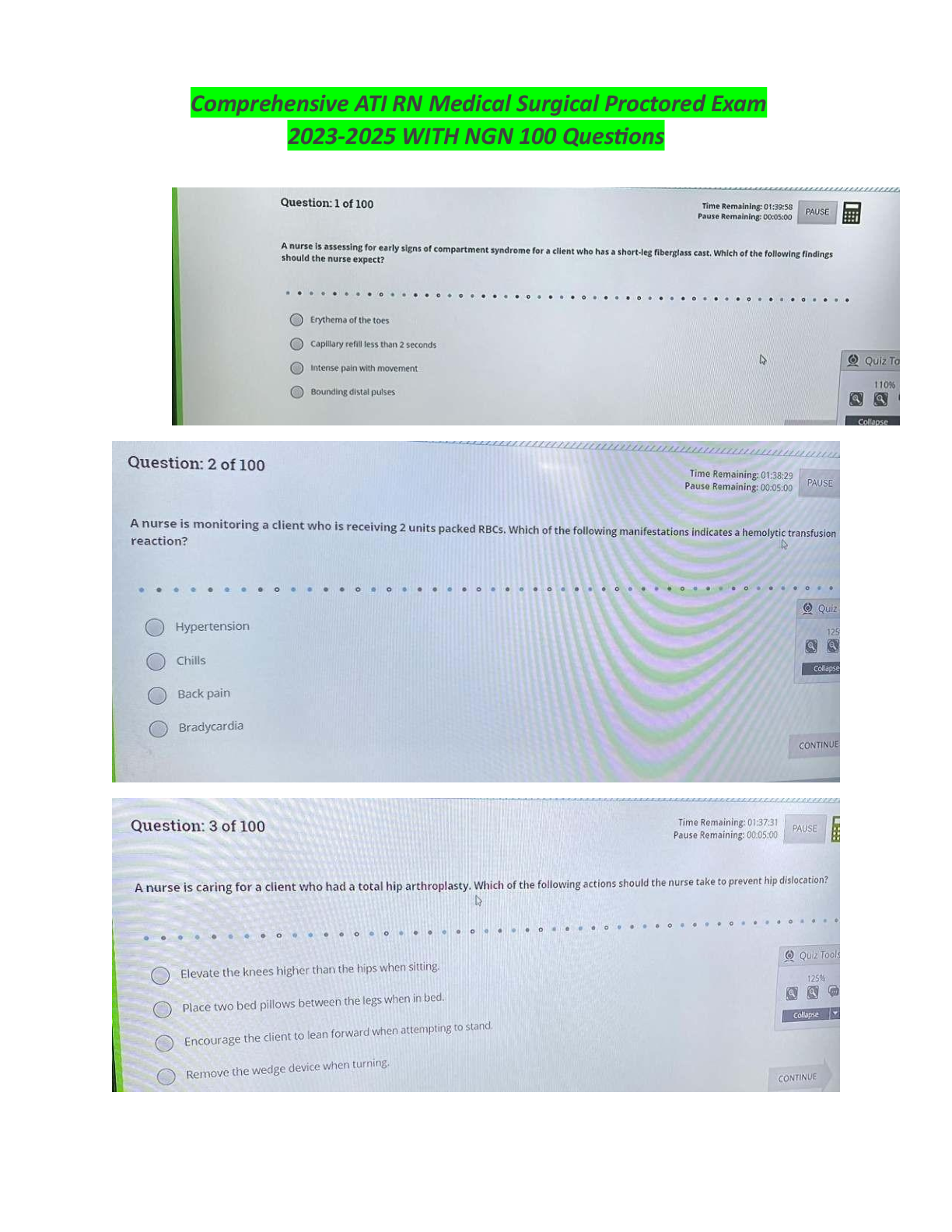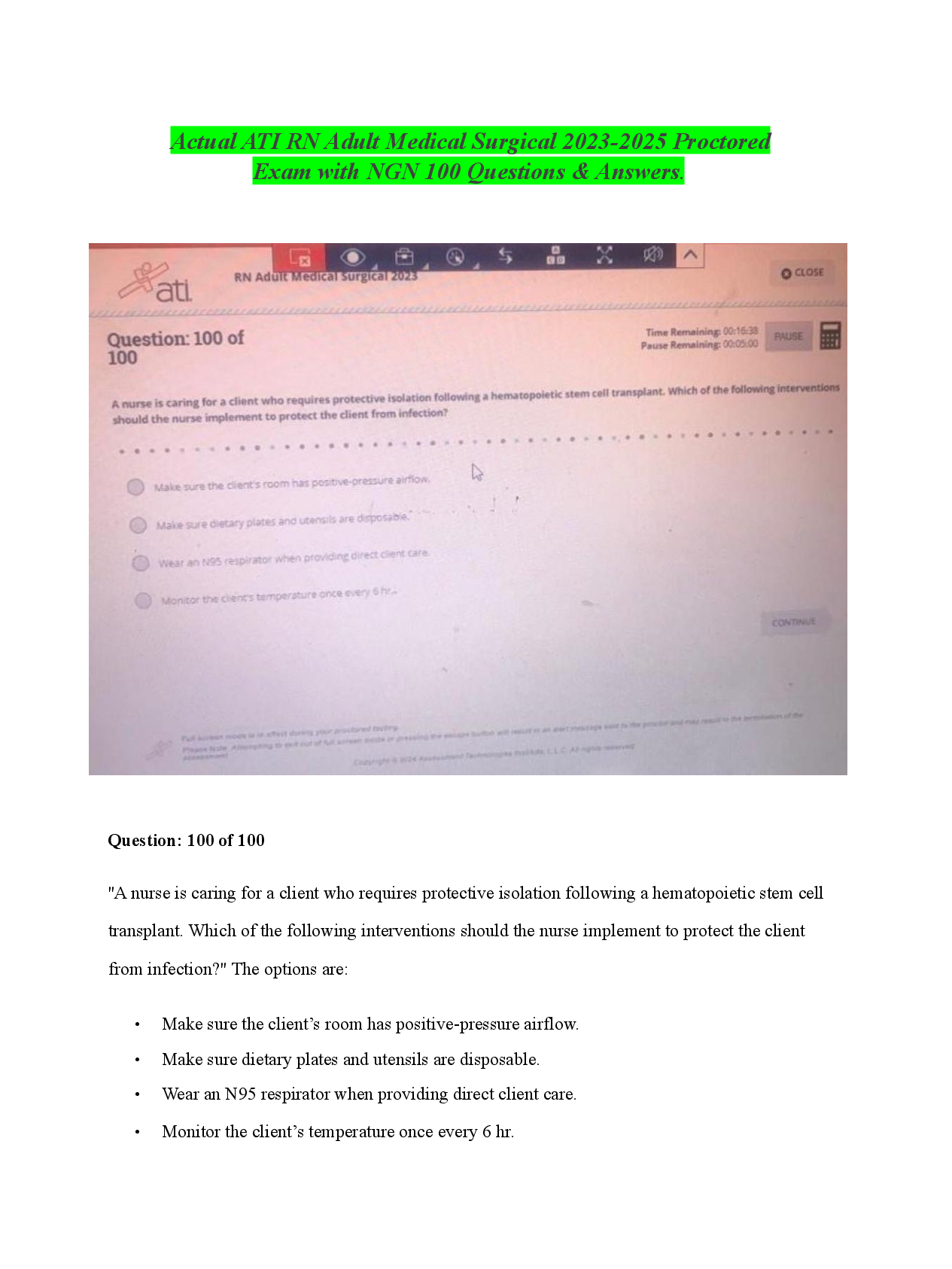CPI/limitations of CPI Quiz 48 Questions and Answers,100% CORRECT
Document Content and Description Below
CPI/limitations of CPI Quiz 48 Questions and Answers 2 ways to act out - physical, verbal CPI Verbal Escalation Continuum - 1. Questioning 2. Refusal 3. Release 4. Intimidation 5. Tension ... Reduction use nonviolent physical crisis intervention - when? - last resort this model used to guide staff through process of establishing therapeutic rapport and staff debriefing - CPI coping model model assists staff to recognize clients behavior level and intervene early and appropriately - CPI Crisis Development Model model demonstrates defensive behaviors and staff interventions for each behavior - CPI Verbal Escalation Continuum Philosophy of Nonviolent Crisis Intervention training model - care, welfare, safety, security for all CPI Crisis Development Model 1st step - anxiety -- supportive CPI Crisis Development Model 2nd step - defensive -- directive CPI Crisis Development Model 3rd step - risk behavior (acting out) -- nonviolent crisis intervention CPI Crisis Development Model 4th step - tension reduction -- therapeutic rapport anxiety - noticeable change or increase in behavior supportive - an empathic nonjudgmental approach defensive - The beginning stage of loss of rationality. directive - an approach in which a staff member takes control of a potentially escalating situation acting out - total loss of rational control that results in a physical acting-out episode Nonviolent Physical Crisis Intervention - safe, non-harmful restraint positions to control an individual until he can resign control of his own behavior tension reduction - Decrease in physical and emotional energy Therapeutic Rapport - an effort to re-establish communication between the individual and staff CPI Supportive Stance: What are the three reasons for using it? - 1. communicate respect 2. non-threatening 3. maintains safety step 2 directive - refusal - setting limits - 3 steps - 1. simple and clear 2. reasonable 3. enforceable what step do we see CPI verbal escalation continuum - step 2 - defensive/directive step 2 directive - questioning ? 2 types - information seeking - give a rational response challenging - redirect, avoid a power struggle HAPTICS - key principles (3) - 1. position 2. posture 3. proximity what step do we see CPI COPING method - step 4 - tension reduction/therapeutic rapport COPING acronym - C - control O - orient P - patterns I - investigate N - negotiate G - give Control in COPING - emotional and physical control emotional and physical control Orient in COPING - establish basic facts establish basic facts Patterns in COPING - look for patterns or triggers staff responses to behavior Investigate in COPING - alternatives to behavior ways to strengthen staff responses Negotiate in COPING - future approaches, expectation, behaviors changes that will improve future interventions Give in COPING - control back, provide support and encouragement support and encouragement Why is post-intervention important (3) - 1. to teach and learn 2. to strengthen our relationship 3. to have closure define when to use "last resort" - 1. hurting themselves or others 2. all other options have been exhausted name 2 ways to consider risk using the decision making matrix - 1. likelihood 2. severity why do we use the CPI crisis development model - to learn staff attitudes and approaches used to de-escalate a situation name 3 approaches to limit setting - 1. interrupt and redirect pattern 2. when and then pattern 3. if and then pattern (try to use positive consequences) define likilihood - the chance that an event or behavior may occur define severity - the level of harm that may occur why do we use the decision-making matrix - tool that can help staff reach objective critical decisions about risk physical skills framework - SEAT 1. Safe 2. Effective 3. Acceptable 4. Transferrable What is the RESPONSE continuum - provides you with a range of verbal and non-verbal strategies to manage behavior through various behavior levels of the Crisis Development Model RESPONSE acronym - R - Relax and downplay E - Explain or ask S - State or tell P - prompt, gesture, or sign O - Option to use physical interventions N - Nurture Recovery S - Support E - Engage and learn CPI not fully representative - Correct Answersnot accurate for a 'non-typical' household spending patterns - Correct Answerssingle people have different spending patterns from households that have one or more children changing quality - Correct Answersalthough price goes up, might not be accompanied by quality new products - Correct AnswersCPI is slow to respond to new products and services, the CPI basket is changed each year but only a few items fall out or come in for the first time geometric - Correct Answersmore accurate and fairer [Show More]
Last updated: 2 years ago
Preview 1 out of 4 pages

Buy this document to get the full access instantly
Instant Download Access after purchase
Buy NowInstant download
We Accept:

Reviews( 0 )
$9.00
Can't find what you want? Try our AI powered Search
Document information
Connected school, study & course
About the document
Uploaded On
Feb 18, 2023
Number of pages
4
Written in
All
Additional information
This document has been written for:
Uploaded
Feb 18, 2023
Downloads
0
Views
79


